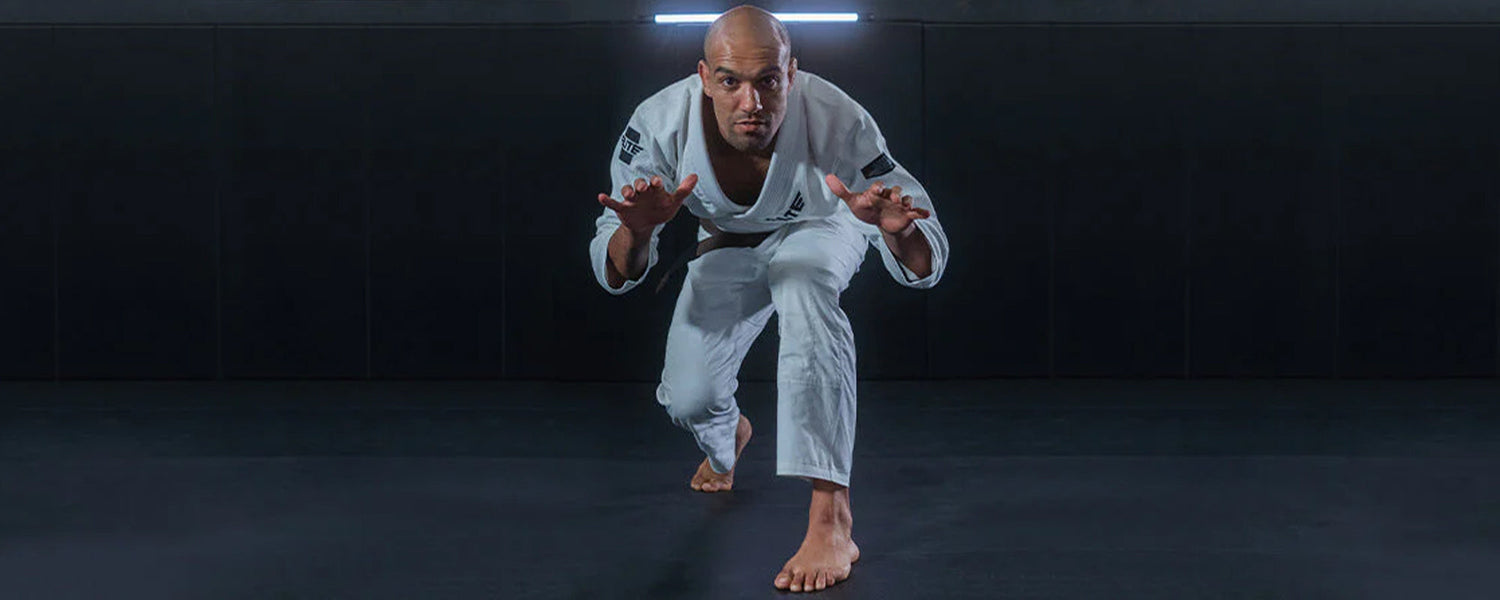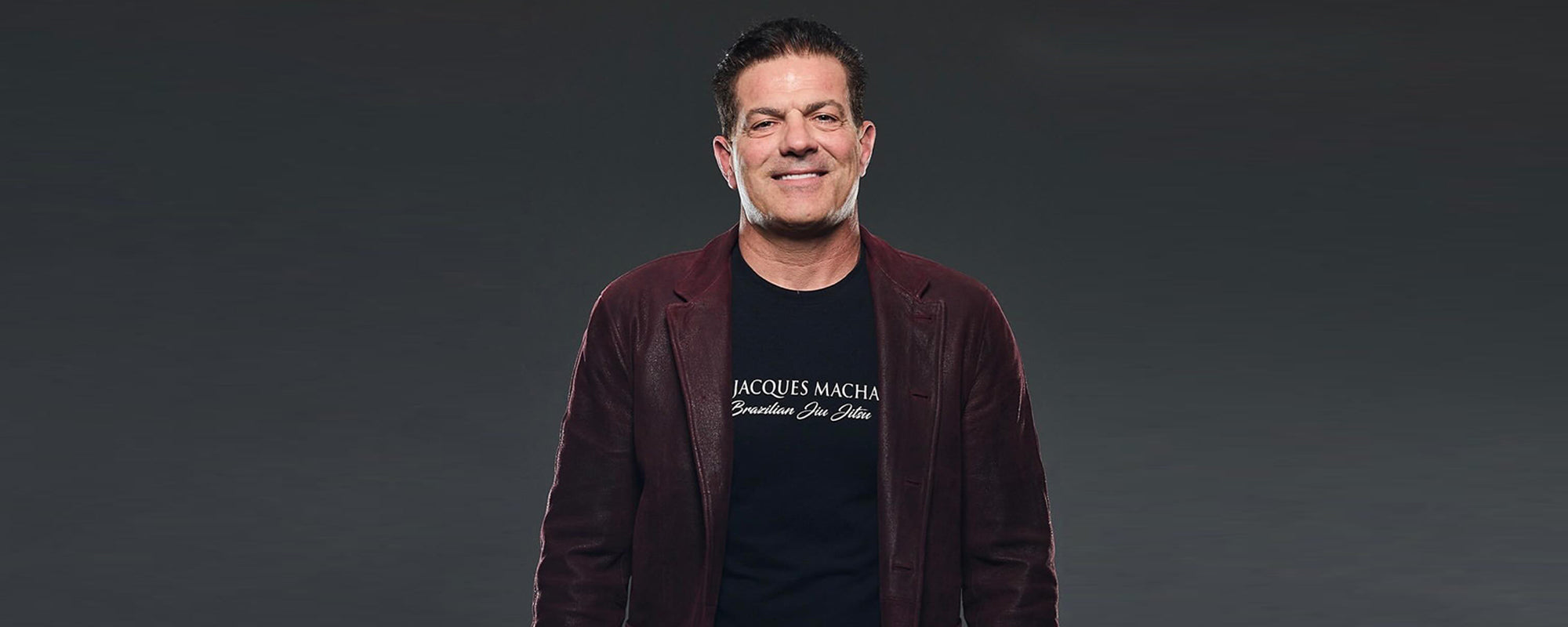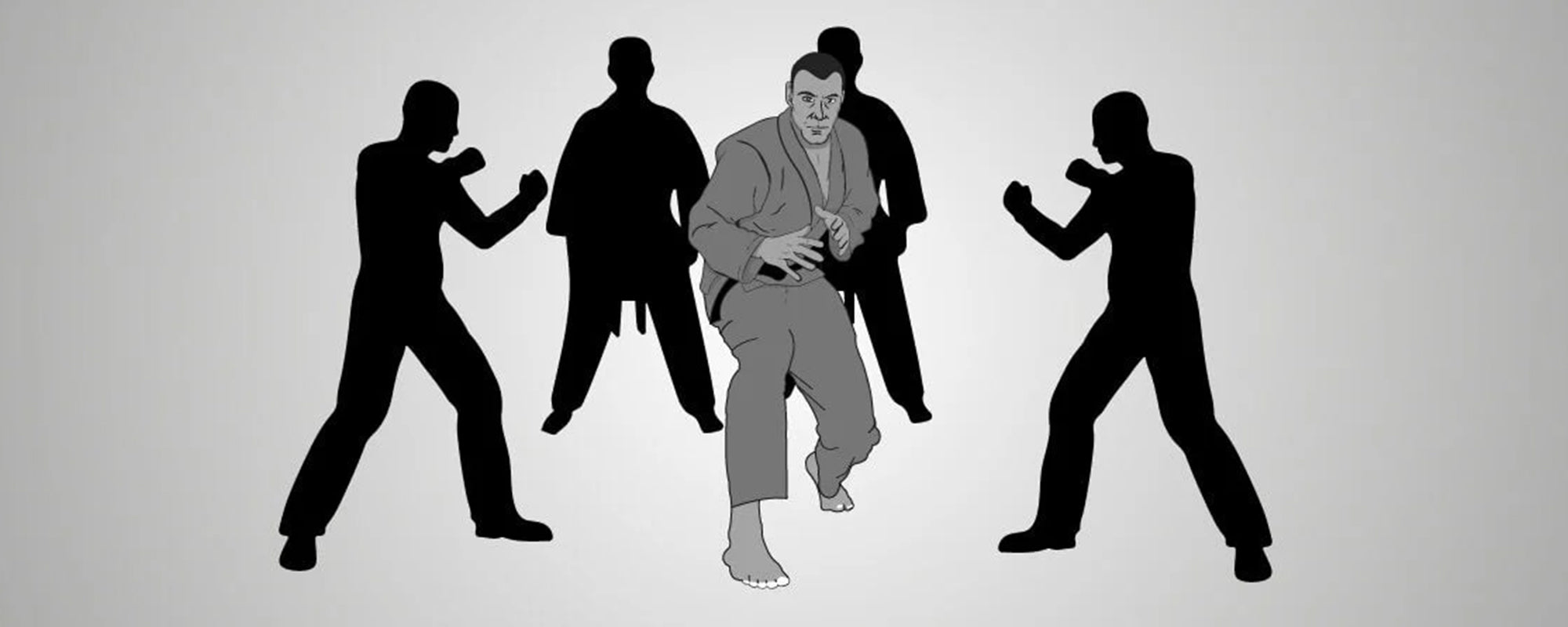Table of content
1. Posture in BJJ
2. How to Improve Your Posture For BJJ
To create a good base for the fundamentals of BJJ, fighters need to have a good posture. A good posture keeps a fighter healthy and safe. The following exercises must be done to improve your body posture.
2.1. Batwings
Batwings exercises are done to improve your body posture for BJJ.
- You can lie down on a bench with your face downwards.
- Take equal weights in both hands.
- Lift the weights at your chest level and hold the position for three seconds.
- Repeat the process then gradually go for the 5 sets.
2.2. Lacrosse Ball Smash
This exercise decreases the fatigue of intense workouts and post-fighting fatigue. It allows free mobility and helps to treat sore muscles. It is done to fix a fighter's body posture. While Applying guards and going for takedowns, a substantial force can be applied if the fighter has the right body posture. If not fixed in time, it can hinder the movement and progress because BJJ is all about the fluid transition from one move to another for escaping the bad position and securing a dominant position.
- The practitioner places some lacrosse balls below his neck close to the shoulder area.
- The practitioner’s arms must be folded and placed on his chest.
- While laying in this position, he should move upwards and downwards and slightly roll on the ball for some inches in every direction from the placement of the ball.
- This exercise is recommended for 5 minutes after the workout.
2.3. Quadrupeds
It is an excellent exercise because it focuses on many areas of the body e.g. strength, improved posture, and stability for hip and shoulder joints and muscles. It also straightens the spine resulting in a good posture.
- The practitioner initiates this exercise by taking the position in which all four limbs are touching the ground.
- Hands are directly below the fighter's shoulders and the neck and back are aligned with the head.
- The practitioner raises his left arm off the mat and straightens it by extending ahead. The position must be kept for 3 seconds. The same process is repeated with the right arm.
- Next, the fighter raises his left leg off the mat and tightens his trunk muscles to keep this posture. He stays in this position for 3 seconds. The same process is repeated with the right leg.
2.4. Box Squats
This exercise helps in building the butt muscles because it is a very crucial joint for body movement when it comes to rolling and escaping especially from the side position. Mostly during BJJ matches, butt muscles get strained. It is because many submissions are applied from the closed guard position. This exercise helps to build strength and flexibility in hip muscle movement and also guides the body in maintaining a good body posture.
- Box squats are almost similar to basic squats but in box squats, the fighter sits on a box or a seat.
- He performs squats by lifting a weight while maintaining a wide standing position.
2.5. Keeping Pressure on Your Hips
It is applied mostly during a fight.
- The fighter is mostly in a close-guard position.
- When the opponent tries to pull the fighter down, the fighter brings his knees closer to the opponent’s waist.
- The fighter tilts his hips and maintains a firm position to avoid the sudden pull.
- It does not let the top fighter get down by the sudden pull of the bottom fighter.
2.6. Using a Measuring Tape
A measuring tape can be used to check whether your posture is improving or not. For this purpose,
- Stand with your back close to the wall.
- Your heels must be 6 inches away from the wall.
- The individual's back of the head, shoulder blades, and hips must be touching the wall.
- Ask your partner to measure the distance between the back of your neck and the wall using a measuring tape.
- If the gap is less than 2 inches, it means your posture is improving.
2.7. Corner Pec Stretch
This exercise can be done anywhere as long as there is a corner. It is for the packs at the front of the individual’s shoulder.
- The individual places his hand against the wall.
- He keeps his head in line and for 15 seconds he moves his body forward and backward with feet at the same place on the ground.
- It stretches the front of the shoulders.
- After that, he lifts his arms up so that his shoulder blades squeeze.
- His thumbs are facing in the opposite direction all this time.
- The individual brings his hands down in the shape of a W.
- He opens his fist and places his hands on the wall and starts to move them forwards and backward.
2.8. Use of Belt
The belt is used to open your chest and shoulders which mostly suffer due to hunching during the fight. After grappling, fighters experience the constriction of their shoulder muscles. The use of a belt gradually alleviates that constriction and brings the fighter's body in a good shape, mode, and feel.
- The belt is looped horizontally behind the fighter's back.
- Each end of the belt is passed over each shoulder.
- At the fighter's back, the belt is crossed and he grabs the end of the belt from both sides.
- The fighter then pulls the belt and by pulling the belt, his shoulders are instantly pulled back.
- The fighter breathes deeply, his lungs are expanded and his rib cage opens up.
2.9. Scorpion Stretch
This stretch is very beneficial for relaxing and opening your chest muscles, humerus, bicep, and even your forearm.
- The practitioner lies on the stomach with arms stretched on the ground.
- He then brings his one hand above his shoulder height at 15 degrees and the other hand comes close to his chest to balance his next move.
- The practitioner turns to the side of his stretched arm and sweeps his leg long then comes back to his initial position.
- The practitioner’s chest must be kept on the ground at all times.
- The same steps are repeated on the other side.
- 3 sets on both sides are recommended.
2.10. Cat Stretch
It is a stretch for the shoulders.
- The individual stands at least a meter away from the wall.
- He places his hands about his own waist height.
- He stretches his fingers and keeps his elbows straight.
- He moves his head downward, keeping his knees soft and angling at his butts.
- In this position, the individual is pushing his hands on the wall.
- He lifts his hips to emphasize the stretch.
- He keeps his back straight.
- The individual completes 3 sets of 10 reps.
2.11. Dynamic Stretching
It includes stretching of tendons and muscles. Here the individual does not hold his position, he just bounces in and out of it. For example, jumping jacks. There are many ways to perform this exercise.
For Downward Dog to Runner’s Lunge:
- The individual appears in a push-up pose and then brings his one foot forward i.e. close to his hands.
- He then moves his head inside with his hips going upwards.
- The same step is repeated for the other foot.
For Inchworm,
- The individual walks his hands on the ground with his neck in the upward direction and knees slightly touching the ground.
- Then he comes back to the standing position by crawling backward.
2.12. Static Stretching
It is performed to heal the strained muscles and tendons by stretching them in a specific way. The individual holds his position for 20 seconds to 2 minutes. This position targets the affected muscle or tendon. The name of this exercise suggests that the individual will remain in the same position keeping it a balanced one.
It can be done after a workout as a part of your cooldown process.
For Half Kneeling Hip Stretch:
- The individual keeps one foot on the ground while the other foot is on the bench with heels facing the ceiling and the knee on the ground.
- One hand of the individual is lifted up while the other is down.
- The individual stays in this position.
For Bench Hamstring Stretch:
- For this exercise, you have to be in a standing position.
- You have to keep one foot on the ground while the other one is on the bench with only your heel touching the bench.
- The individual keeps both legs straight.
- He then brings his hands and touches the toes of that foot that is on the bench.
2.13. Flexibility
Flexibility is a prerequisite in BJJ because if you are flexible you can easily execute and finish your techniques and submit even a bigger opponent. It allows practitioners to get into better positions and provides us with more room to move. But when a fighter suffers from bad posture, he becomes way too rigid and appears sloppy while applying his moves. For this purpose, it is very important for a fighter to correct his posture so that he can gain victory over his opponent.
To become flexible, a fighter has to work on different parts of his body. For a better understanding, let’s know more about these body parts.
Neck
A fighter's neck has to be flexible enough to get out of the traps of the opponent and prepared enough to bear immense pressure. Most fighters do not pay attention to the importance of neck flexibility and training during a BJJ match which can affect the performance of the fighter. Neck strength is also crucial for neck injury prevention because neck pain and injury are among the most common BJJ injuries.
- For this purpose, a fighter needs to roll backward.
- The fighter sits on the ground and rolls backward with his hips coming up and hands on the hips.
- He then rolls forwards and repeats the move.
- By rolling backward, the fighter straightens his back thus exerting pressure on his knees and keeping his head on the ground.
Shoulders
When the shoulders are flexible, it allows you to escape the shoulder locks and improves the transitions from one move to another. Improved flexibility can even let you escape from the joint locks instead of tapping out.
- You can take a belt to perform this exercise.
- The individual takes a belt and grasps both ends with his hands.
- He then moves his hands up and down to stretch his arms and shoulders. This is called flexion.
- He then moves his hands sideways which is called abduction.
- Then he moves his hands externally. It is called external rotation.
- After wrapping the belt around his arms, he moves his hands internally and this process is called internal rotation.
Knees
Knees are the major component in grappling submission techniques. Flexible knees help with takedowns.
- In this position, the fighter's one foot and one knee are on the ground.
- He places his fist on the ground.
- With his other hand, he raises it to the top position and then brings it behind his fist.
Hips
Working on many body parts and joints will slow your speed to improve your posture. So it is better to work on those body parts which are highly important. For example, hips are more important for applying BJJ techniques than other body parts.
- The practitioner steps on a box that elevates his feet from the ground.
- He then puts one foot on the box and only the heel of the other foot hangs on the stool.
- He stays in this position for 90 minutes and then changes his foot.
- This exercise is done to improve the flexibility of the hips as well as the calf muscles.
3. Why is It Important to Improve Your Posture for BJJ?
It is very important to improve your posture for BJJ as it increases the fluid execution of moves and provides a solid base for the initiation of Grappling moves. Bad posture not only causes a fighter to appear sloppy but it can also affect the speed of the fight. A good posture can ensure fewer chances of injury.
A bad posture can also affect the discs in the spine causing immense pain which results in rounded backs. Improving your posture for BJJ allows free mobility hence fewer chances of getting trapped by your opponent.
4. FAQs
4.1. Why is good posture necessary in BJJ?
BJJ is a grappling sport based on joint locks and strangulation moves. A good posture enables strong positioning, provides a firm base for successful submissions, and ensures more advantageous positions.
4.2. How is flexibility important for BJJ?
Flexibility allows a fighter to get out of submissions without tapping out. A good fighter’s fluidity, grappling moves, and flexibility can make it possible.
4.3. Is stretching good to become flexible for BJJ?
Different types of stretching exercises are done to make your BJJ game a flexible one. The more a fighter is flexible, the more he can secure himself from the opponent’s traps and submissions.
5. Conclusion
BJJ is a grappling sport. To successfully apply sweeps, transitions, escapes, and submissions, it is integral for a fighter to have a good body posture. This posture keeps the fighter healthy as well as providing maximum input. The exercises mentioned above help in achieving a good body posture. By incorporating the above-mentioned exercises in the training routine, a fighter can not only avoid bad posture but potentially improve the grappling game.













Leave a comment
This site is protected by hCaptcha and the hCaptcha Privacy Policy and Terms of Service apply.